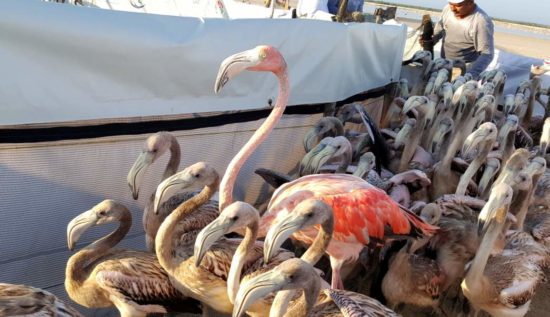The Río Lagartos Biosphere Reserve in the East of Yucatan is one of the main nesting refuges in Mexico for pink flamingos.
“It is a bird that identifies us as a state and as a country, even,” said Jorge Carlos Berlin Montero, delegate of Semarnat in Yucatan.
In Yucatan, this species makes its habitat in the 10 ecological reserves where more than 30 thousand flamingos were detected, which speaks of an imminent recovery of this species after reaching critical indexes in 2012 with 6 thousand of the waterfowl.
“Fifteen thousand nests have been identified, and we know that in the case of flamingo the eggs are nested by both male and female, then we are talking about 30 thousand flamingos that are guarding those 15 thousand nests,” explained Berlin Montero, of Semarnat.
Another 5 thousand specimens that are grouped in dispersed populations, far from the communities settled in the reserves, were detected by air and satellite.
Researchers point out that the main natural factors that prevented their reproduction were: climatic changes, water depletion, natural predation and lack of food.
However, indiscriminate hunting and trafficking to commercialize them have been factors that led to population decline.
“Predation, precisely as it is a very beautiful bird and very attractive, there is a risk that from these chicks can be stolen, can be removed from their natural habitat and can be commercialized,” said Berlin Montero, of the Semarnat.
In 2002, more than 90,000 flamingoes were detected, the highest population index in the history of Yucatan.
The General Law of Wildlife establishes fines of 500 thousand pesos for poaching of this species.
Source: noticieros.televisa.com



